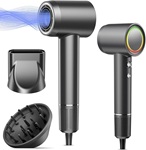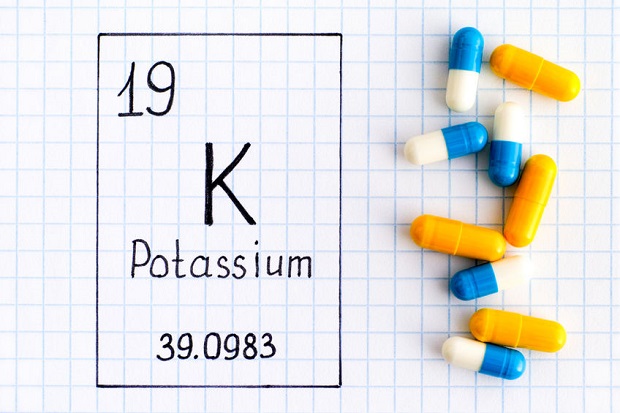
Does Hair Color Affect Static Electricity?
If all variables are constant, hair color does not affect static electricity. In other words, if you rub a balloon on the head of a redhead, brunette, blonde, and a person with black hair, the static electricity generated will be the same as long as several variables are constant such as their hair type, which products they used on their hair, the weather, and so forth. The variables affect how hair reacts to static electricity, not the color.
How Static Electricity Works
All objects are made up of atoms that contain charges—protons are positively charged, electrons are negatively charged, and neutrons are neutral. Like charges repel each other, opposite charges attract each other. Static electricity is an imbalance of charges on an object. Rubbing two things against each other can transfer electrons from one to another. For example, rubbing your shoe on the carpet will cause the electrons to move from the carpet to you. The shock you feel when you touch something is the extra electrons being released. [Library of Congress]
How Is Static In Your Hair Generated?
Hair is triboelectric, which means it becomes electrically charged after coming in contact with another material through friction. Under normal circumstances, your hair’s negative and positive charges are equal, generating a neutral charge. Static in your hair is created when electrons move from your hair to an object, such as pulling off a hat or rubbing a balloon across your hair. The balloon is now negatively charged, and your hair is positively charged. Now that the individual hairs have the same positive charge with no electrons to neutralize them, they repel each other by standing up and moving away from one another. [Montana State University]
Your hair type plays a role in how it reacts to static electricity. Course hair and fine hair react differently to static electricity due to the overall surface area. Coarse hair has more cortex and less cuticle meaning less surface area relative to its total weight. [Warren] Thinner hair has a high proportion of cuticle, giving it more surface area per its unit weight, making it more vulnerable to damage and more hair surface area to be affected by static electricity. [Draelos]
Why Some Often Assume It’s the Result of Hair Color
So what does hair type have to do with hair color? On average, people with a particular hair color seem to share the same hair type. For example, natural redheads tend to have the thickest hair, while natural blondes tend to have the thinnest. If all redheads had thick hair and all blondes had thin hair, then the answer to does hair color affect static electricity would be yes. [WebMD]
This simply isn’t the case. Not all blondes have the same hair texture. Because genetics, age, and several other factors play a role in hair texture, it cannot be definitely concluded that hair color always affects static electricity.
Additional Factors That Affect How Static Electricity Reacts to Hair
Attempting to test the theory that static electricity is affected by hair color is difficult due to the myriad of variables. For instance, hair curvature will alter the results independent of hair color. Which hair products were used that day can also skew results. Here is a quick glance at a few variables that can affect how hair reacts to static electricity independent of color.
Hair Curvature
How curly a person’s hair is will also affect how it will react to static electricity. Chemical and Physical Behavior of Human Hair demonstrated that curl types IV-VIII (curly, very curly, coiled, very coiled, zig-zag) do not experience the same flyaway hair as a result of static electricity than those with straighter hair experience. The entanglements created by the curls suppress the individual hairs from separating and repelling due to the electrical charge. [Robbins]
Age
Because hair changes texture as you get older, age will play a part in how your hair reacts to static electricity. For example, young children have finer hair than adults and, therefore, are more prone to static electricity regardless of their hair color. Your hair texture changes with age as well. As you age, your hair strands become smaller and produce less pigment resulting in thin, fine, light-colored hair. [US National Institutes of Health]
Weather
If you are attempting to test your hair color static electricity theory over the course of several days, the weather factors into your results. With static build-up, charge rate and charge loss are both affected by relative humidity. Winter is usually when static builds up in the hair because electrons build up easily when the air is dry. The humidity present in the summer forms a water barrier on most surfaces allowing electrons to flow easily rather than build up.
Hair Products
Many hair products, such as conditioners, are designed to reduce frizz and static electricity, thus altering test results independent of hair color. Conditioners contain molecules of cationic surfactants, which have a positive charge. This positive charge is attracted to the negative charge of the hair, which helps it form a thin film on the hair. This results in a reduction of static electricity. [Bhushan]
Resources
- Library of Congress-Fun Science Facts – How Does Static Electricity Work?
- Montana State University-Science Zone – What Is Static Electricity?
- Warren, Roxy A. Haircoloring In Plain English.
Albany, N.Y.: Milady SalonOvations, 1999. Print. - Draelos, Zoe Dianna. Hair Care: An Illustrated Dermatologic Handbook. Print
- WebMD – Best Kept Hair Secrets
- Robbins, Clarence R. Chemical and Physical Behavior of Human Hair.
5th ed. Berlin: Springer, 2012. Print - US National Institutes of Health – Aging Changes in Hair and Nails
- Bharat Bhushan. Biophysics of Human Hair: Structural, Nanomechanical, and Nanotribological Studies
- Proceedings of the International Symposium on Forensic Hair Comparisons
The Morphology and Chemistry of Human Hair; Clarence R Robbins






